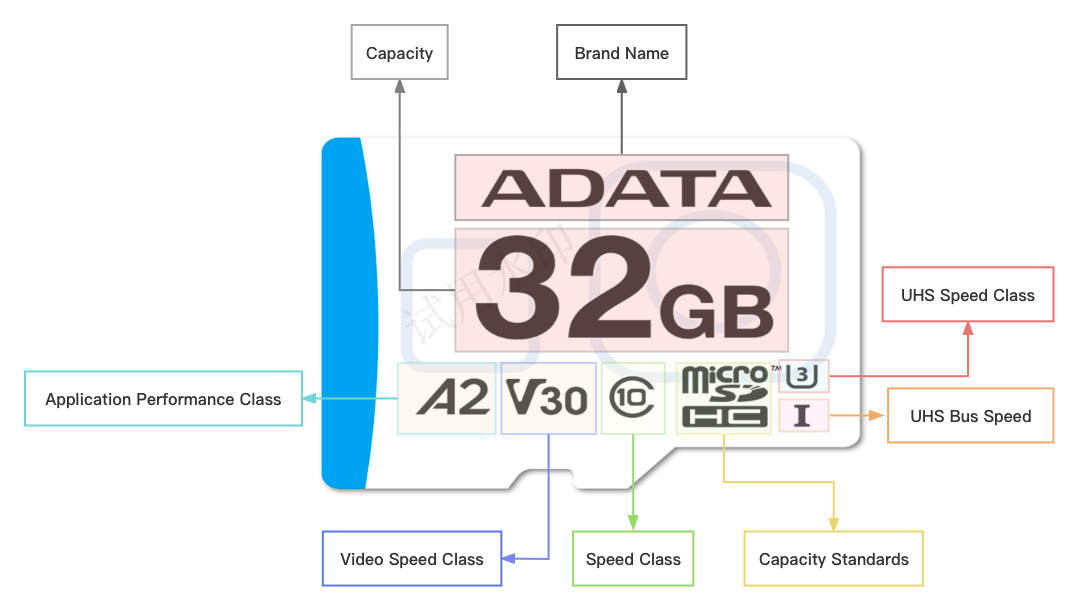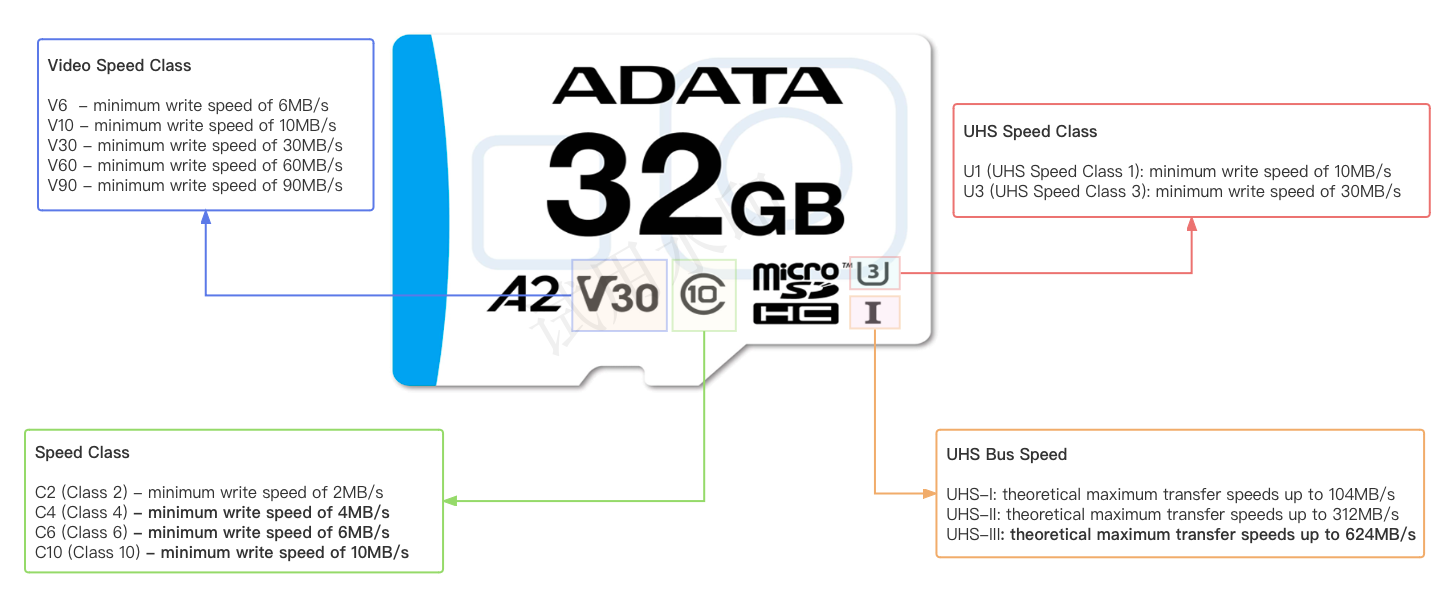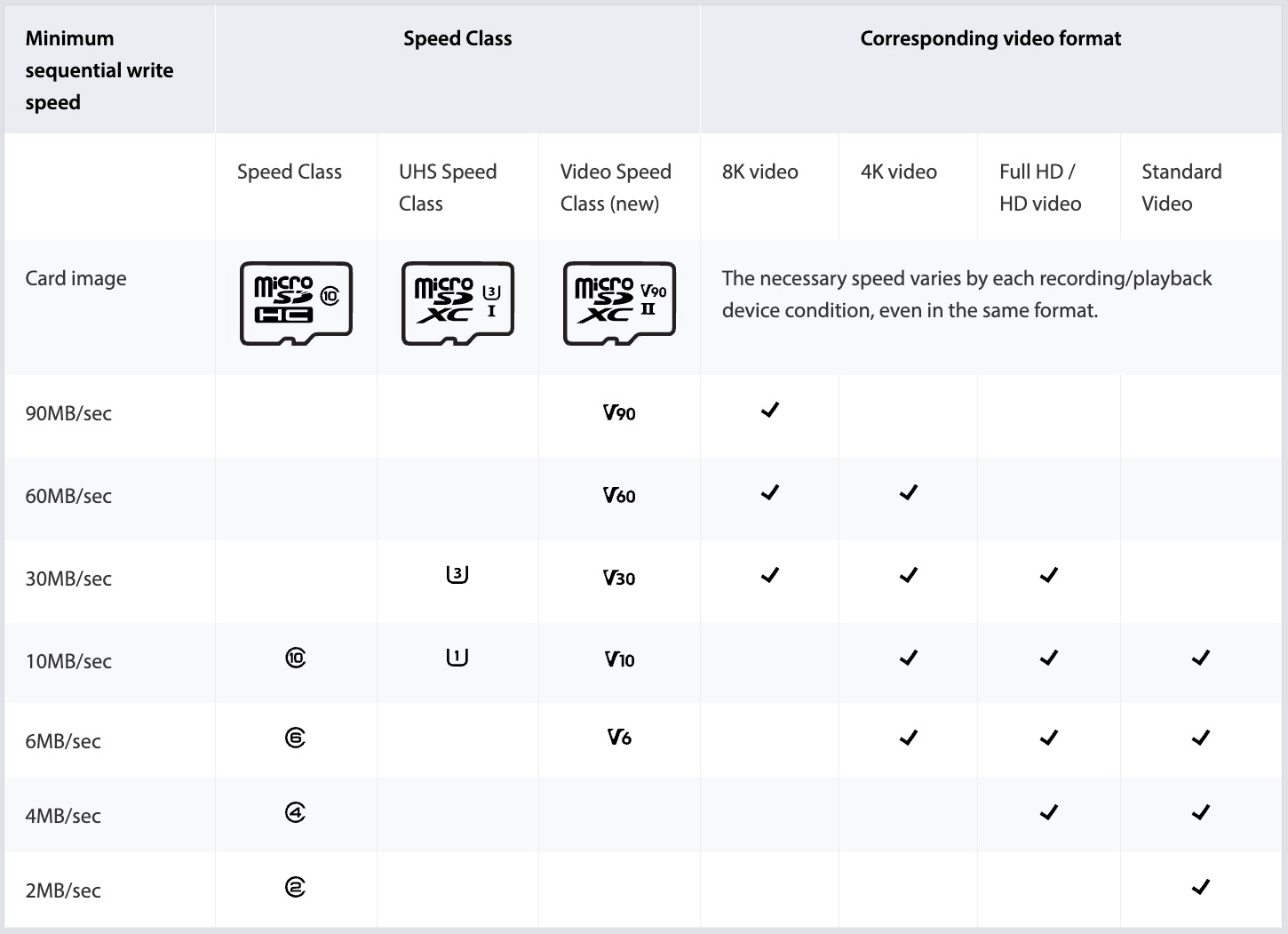Powerful Protection from Payment to Delivery
Secure and Reliable Payment
Money Back Guarantee
Shipping and Delivery
After-Sales Service
A Guide to Choosing the Best micro SD Card for Your DJI Mini 3 Pro
“Since the specifications of memory cards are quite tedious if you don’t want to see boring technical marks, you can directly scroll to the bottom of the content and see how Chipdatas teaches you how to accurately choose the best micro SD card (TF card).”
Do you feel that the video quality of your DJI Mini 3 Pro drone device is very poor? Are you looking for a micro SD card (TF card) for your DJI Mini 3 Pro? If so, let me help you uncover the secrets of micro SD cards (TF cards) and find the best micro SD card (TF card) that suits your device.
Whether it is friends who play drones, play SLRs, or play sports cameras, they often can’t avoid contact with memory cards. But when we go to buy memory cards, we often get confused by those specifications that look like spells. However, these incomprehensible marks determine whether you can shoot high-quality videos.
Let me introduce the requirements of DJI Mini 3 Pro for memory cards.
1. DJI Mini 3 Pro only supports micro SD cards in drone or DJI RC(Remote controller);
2. DJI Mini 3 Pro supports a maximum capacity of 512GB for micro SD cards;
3. DJI Mini 3 Pro requires a minimum write speed of 10MB/second and above for micro SD cards, and recommends using UHS-I Speed Class 3 and above micro SD cards;
4. DJI Mini 3 Pro supports UHS-I, UHS-II and UHS-III;
Let’s start to get to know these marks.

What is the micro SD cards?
A micro SD card is a type of micro flash memory card that was originally called a Trans-flash Card (abbreviated as TF card). It was adopted by the SD Association and renamed as a micro SD card. Its size is 15mm(Length) x 11mm(Width) x 1mm(Height), only about a quarter of the standard SD card, equivalent to the size of an adult’s thumbnail.
micro SD cards are smaller-sized SD cards that are more commonly used to expand the storage system of devices such as security cameras, dashcams, drones, sports cameras, gaming devices, and smartphones.
1. Brand Name Mark
micro SD card (TF card) brands include SanDisk, Kingston, Samsung, etc. Some memory cards also have the product series name or model number printed on them, which can be understood as an extension of the brand mark.
2. Capacity Standards Mark
micro SD card capacity standards are divided into four types, namely microSD card, microSDHC, microSDXC, and microSDUC.
| Capacity Standards Type | Storage Capacity |
| microSD | Minimum capacity 128MB to 2GB |
| microSDHC | Minimum capacity 2GB to 32GB |
| microSDXC | Minimum capacity 32MB to 2TB |
| microSDUC | Minimum capacity 2TB to 128TB |
3. Capacity Mark
The capacity mark is used to indicate the exact capacity of the micro SD card (TF card).
There was a time when the capacity of micro SD cards was still in the era of hundreds of MB, and having a 2GB SD card felt very large. However, with the development of the times, more and more photo devices take a Raw format photo that requires tens of MB of capacity, and SD cards have also become larger and larger.
Generally speaking, the current mainstream SD cards are at the level of 64GB/128GB, and the maximum capacity has reached 1.5TB.
4. UHS Bus Speed Mark
UHS is an abbreviation of Ultra High Speed which is a new technology for SDHC memory cards and SDXC memory cards to increase the bus interface speed.
| UHS Bus Speed | theoretical maximum transfer speeds |
| UHS-I | Up to 104MB/sec |
| UHS-II | Up to 312MB/sec |
| UHS-III | Up to 624MB/sec |
microSDHC or microSDXC cards that support UHS-I can increase their transfer performance to 104MB/s, while UHS-II is three times faster than UHS-I, increasing the interface speed to 312MB/s.
DJI Mini 3 Pro supports UHS-I cards, with a write data speed of up to 104MB/s. If you want to shoot high-resolution videos, you need to look for UHS-I cards to ensure smooth recording.
5. micro SD card Speed Class Mark
There are three types of speed classes for micro SD cards, namely Speed Class, UHS Speed Class, and Video Speed Class. Why are there three categories of speed grades? This is the technical standard defined by the SD card standard-setting organization. The current SD card technical standards are divided into five generations, namely SD 1.0, SD 2.0, SD 3.0, SD 4.0, and SD 5.0. Each generation of technical standards is backward compatible, but devices that do not support the latest technology will not be able to achieve the highest speed.

-
5.1 Speed Class
The original speed class of micro SD cards is indicated by the symbol “C”, and there are four levels: C2, C4, C6, and C10. The higher the number, the faster the speed. The current devices require a speed class of C10, and the other three levels are being phased out.
| Speed Class | Minimum Write Speed | Applications |
| C2 | 2MB / sec | Standard definition video recording |
| C4 | 4MB / sec | High-definition video recording |
| C6 | 6MB / sec | High-definition video recording and burst-mode photography |
| C10 | 10MB / sec | Full HD video recording and continuous burst mode photography |
-
5.2 UHS(Ultra-High Speed) Speed Class
UHS Speed Class is a higher level of speed class, indicated by “U”. UHS Speed Class indicates the minimum continuous write performance for video recording. Generally speaking, devices that support 4K recording usually require at least U3-level (30MB/s) storage cards.
| UHS Speed Class | Minimum Write Speed | Applications |
| U1(UHS Speed Class 1) | 10MB / sec | Full HD video recording and real-time broadcasting |
| U3(UHS Speed Class 3) | 30MB / sec | 4K video recording and continuous burst mode photography |
It should be noted that U1 and U3 memory cards can both use the UHS-I bus interface, but are not compatible with the UHS-II bus interface. The UHS-I and UHS-II bus interfaces indicate the theoretical maximum read and write speeds (read and write speeds) of their respective bus interfaces, which are different from the continuous write speed of the speed grade.
What is bus speed?
Bus speed refers to the theoretical data transfer rate of the interface itself. A UHS-I U3 level micro SD card guarantees a write speed of 30MB/s. If it is used with a device that supports the UHS-I bus interface (supports a theoretical maximum transfer speed of up to 104MB/s), its potential read and write speed can theoretically reach up to 104MB/s.
The UHS-II bus interface allows a theoretical maximum transfer speed of up to 312MB/s, so the potential read and write speed of UHS-II compatible cards can reach up to 312MB/s. Only when the SD card and the UHS bus interface are fully compatible can they achieve the best speed advantage?
UHS-II is backward compatible with UHS-I. For example, users can use UHS-II cards in devices that support UHS-I. In this case, the card can only use the lower speed specifications of the UHS-I bus interface, and cannot take advantage of the speed of UHS-II.
-
5.3 Video Speed Class
VSC (Video Speed Class) video speed class is created to support higher video resolutions (such as 4K, 8K, etc.) and recording functions (such as video streaming, VR, and 360-degree capture), and includes 5 levels. The level number is the minimum write speed, for example, V30 level, the 30 number means that the minimum write speed is 30MB/sec.
| Video Speed Class | Minimum Write Speed | Applications |
| Video Speed Class V6 | 6MB / sec | Standard video recording |
| Video Speed Class V10 | 10MB / sec | Full HD video recording |
| Video Speed Class V30 | 30MB / sec | 4K video recording |
| Video Speed Class V60 | 60MB / sec | 8K video recording |
| Video Speed Class V90 | 90MB / sec | 8K video recording |
VSC can use both UHS-I and UHS-II bus interfaces, but note that the UHS-I bus interface only supports V6 to V30 speed class memory cards, while V6 to V90 speed class flash memory cards can use the UHS-II bus interface.
If you want to use DJI Mini 3 Pro to shoot ultra-high resolution, high-quality videos, and multi-file recording, you also need to pay attention to the VSC video speed grade.
6. APP Performance Class
APP performance class is used for smartphone application performance classification, divided into two levels: A1 and A2.
A2-level memory cards are much faster than A1-level memory cards in random read and write speeds. In devices such as cameras or game consoles, A2-level memory cards are generally used, which can achieve a smoother operation experience.
The following is the explanation of A1 and A2 levels by the SD Association:
| Application Performance Class | Minimum Random Read | Minimum Random Write | Minimum Sustained Sequential Write |
| A1 | 1500 IOPS | 500 IOPS | 10MB/sec |
| A2 | 4000 IOPS | 2000 IOPS | 10MB/sec |
DJI Mini 3 Pro does not require an APP performance class.
Summary
The best micro SD card for your DJI Mini 3 Pro
Well, the annoying marks of the micro SD card have been introduced. But there are three types of speed grades, how should we choose?
-
7.1 Speed class selection
According to the following speed class table, We recommend:
Preferred Video Speed Class standard: V90 / V60 / V30 / V10
Secondary UHS standard: U3 / U1
Minimum choice: Speed Class 10

-
7.2 Capacity selection
The mainstream capacities of micro SD cards (TF cards) used by drones are mainly 32GB, 64GB, 128GB, 256GB, 512GB, etc. Generally, you can choose within this range, which has a high-cost performance. The choice of capacity is somewhat related to what content you plan to shoot with the drone. If you just take pictures of the beautiful scenery and some local customs, then 32GB and 64GB are enough; if you use the drone to shoot 4K videos, then you need a relatively large capacity, generally 128GB, 256GB, or even 512 GB.
-
7.3 Brand selection
There are many brands to choose from, including SanDisk, Samsung, and Kingston. Although it may be tempting to choose a cheaper and less well-known brand, it is also important to choose a reputable brand to ensure quality and reliability. However, drone video shooting is not easy, so it is better to choose a big brand for quality assurance.
-
7.4 Is one micro SD card (TF card) enough?
It depends on the actual needs.
If you just use DJI Mini 3 Pro occasionally to play around and take some casual snapshots, wonderful moments, and photos and short videos of the scenery, then a 64GB micro SD card (TF card) may be enough.
However, for a professional photographer or enthusiast who often goes out to explore and shoot, it is far from enough to carry only one high-capacity and high-performance storage card. Generally, you need to carry several suitable capacities and high-performance storage cards to shoot and store more wonderful materials. The benefits of having several storage cards are also - if you only carry one large-capacity storage card, in case it breaks down, all the data you have worked hard to shoot may be gone, which is a very sad and depressing thing. But if you carry several suitable capacity storage cards, then even if one of them breaks down unfortunately, you still have several others available, so that you don’t lose all the wonderful moments and valuable videos you have shot. Of course, if your economic conditions allow it, it is also good to prepare several storage cards that are very high-capacity and high-performance.
If you use the drone to shoot videos and photos just for fun, focusing on learning how to use the drone shooting skills and techniques, taking videos and photos as a souvenir, etc., then buying a few lower-capacity 32GB or 64GB micro SD cards is more than enough.
-
7.5 DJI Mini 3 Pro’s most worry-free recommended micro SD card list
| Model Number | Capacity | Attributes |
| SanDisk Extreme | 64GB / 128GB / 256GB / 512GB | V30 A1 microSDXC |
| SanDisk Extreme Pro | 64GB / 256GB / 400GB | V30 A2 microSDXC |
| SanDisk High Endurance | 64GB / 256GB | V30 microSDXC |
| SanDisk Max Endurance | 32GB / 128GB / 256GB | V30 microSDHC |
| Kingston Canvas Go! Plus | 64GB / 128GB / 256GB | V30 A2 microSDXC |
| Lexar High Endurance | 64GB / 128GB | V30 microSDXC |
| Lexar 667x | 64GB | V30 A1 microSDXC |
| Lexar 633x | 256GB | V30 A1 microSDXC |
| Lexar 1066x | 64GB / 128GB / 256GB | V30 A2 microSDXC |
Reference
https://en.wikipedia.org/wiki/SD_card
Recent Posts








Company
About UsContact UsTerms & ConditionsPrivacy StatementPayment,Shipping & InvoiceRefund & Return PolicyWarranty PolicyFrequently asked questionHolidays for Chinese Mid-Autumn Festival and National Day in 2023


















